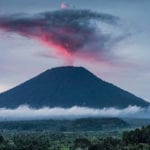 Creepy
Creepy  Creepy
Creepy  Technology
Technology 10 Scientific Breakthroughs of 2025 That’ll Change Everything
 Our World
Our World 10 Ways Icelandic Culture Makes Other Countries Look Boring
 Misconceptions
Misconceptions 10 Common Misconceptions About the Victorian Era
 Mysteries
Mysteries 10 Strange Unexplained Mysteries of 2025
 Miscellaneous
Miscellaneous 10 of History’s Most Bell-Ringing Finishing Moves
 History
History 10 Great Escapes That Ended Right Back in Captivity
 Weird Stuff
Weird Stuff 10 Fascinating Things You Might Not Know About Spiders
 Food
Food 10 Everyday Foods You Didn’t Know Were Invented by the U.S. Military
 History
History 10 Odd Things Colonial Americans Kept at Home
 Creepy
Creepy 10 More Representations of Death from Myth, Legend, and Folktale
 Technology
Technology 10 Scientific Breakthroughs of 2025 That’ll Change Everything
 Our World
Our World 10 Ways Icelandic Culture Makes Other Countries Look Boring
Who's Behind Listverse?

Jamie Frater
Head Editor
Jamie founded Listverse due to an insatiable desire to share fascinating, obscure, and bizarre facts. He has been a guest speaker on numerous national radio and television stations and is a five time published author.
More About Us Misconceptions
Misconceptions 10 Common Misconceptions About the Victorian Era
 Mysteries
Mysteries 10 Strange Unexplained Mysteries of 2025
 Miscellaneous
Miscellaneous 10 of History’s Most Bell-Ringing Finishing Moves
 History
History 10 Great Escapes That Ended Right Back in Captivity
 Weird Stuff
Weird Stuff 10 Fascinating Things You Might Not Know About Spiders
 Food
Food 10 Everyday Foods You Didn’t Know Were Invented by the U.S. Military
 History
History 10 Odd Things Colonial Americans Kept at Home
Top 10 Most Dangerous Places To Visit Thanks To Humans
You may have noticed that humans tend to alter their surroundings to make themselves comfortable. We have been doing it since the dawn of agriculture. While most places remain livable, some have been so badly damaged that they are no longer safe for people to live in.
Whether this was due to neglect, weapons testing, or climate change, people have been ruining the Earth for millennia. In the past century, we ramped up our efforts and caused so much damage to the planet that just staying overnight in some of these places could be a death sentence.
10 Anthrax Island(s)
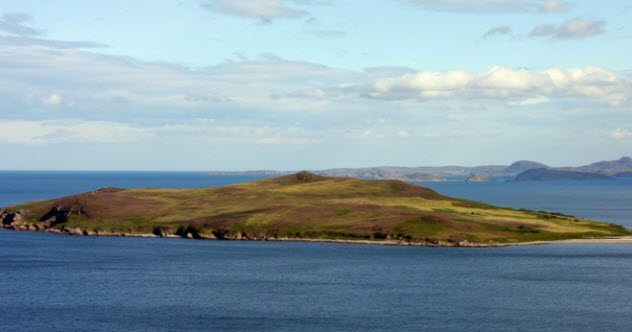
If the entry title didn’t immediately give this one away, you should avoid any place that is known as “Anthrax Island.” There are three such islands spread across the planet. They were used by the United States, the United Kingdom, and the Soviet Union to test biological weapons such as anthrax. But that wasn’t the only deadly bug unleashed in these places.
Gruinard Island off the coast of Scotland was used by the UK during World War II to test anthrax. It was deemed uninhabitable until the late 20th century after decades of anthrax spore contamination.[1]
Vozrozhdeniya Island was an island in the Aral Sea that was split between Kazakhstan and Uzbekistan. The Soviets used it in the early 1950s to test biological weapons. They planned on decontaminating the island, but the USSR fell before they could do so. Some areas have been cleaned up, but you would be ill-advised to dig up any soil.
Finally, the United States government owns and operates the Plum Island Animal Disease Center off the coast of New York. In a plan to sell the land, the government had to commission an environmental impact study to determine the levels of contamination.
9 The Korean DMZ
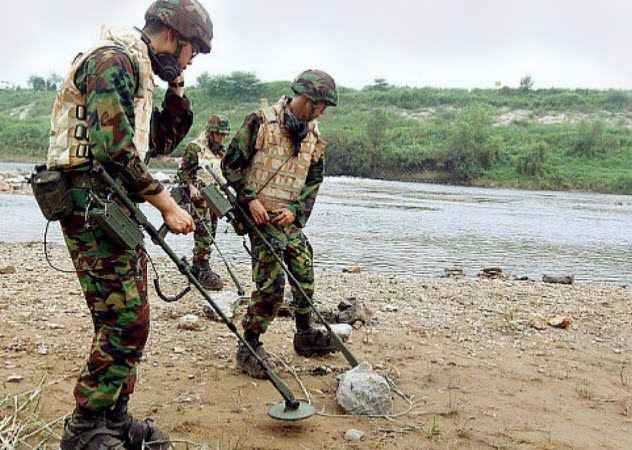
You might think that a demilitarized zone (DMZ) would be a safe place to go. The word “demilitarized” is a bit misleading since it refers to a stretch of land between the borders of North Korea and South Korea, which could also be called a no-man’s-land.
Within the 250-kilometer (155 mi) stretch of land, which is approximately 4 kilometers (2.5 mi) wide, there exists the largest accumulation of antipersonnel land mines on the planet. Because of the DMZ, the United States refused to sign an international treaty banning the weapons, which kill and maim far more unfortunate civilians than are killed by soldiers on either side.
Entering the DMZ is a risky venture for anyone. While incursions into each other’s territory happen every now and again, few people ever safely enter or exit the border. Both military factions constantly patrol the border on each side, so crossing into it is extremely difficult.
If you did manage to find yourself in the DMZ, the odds of getting captured or arrested are slightly lower than the odds of stepping on something, hearing a metallic click, and losing your leg.[2]
8 Gilman, Colorado
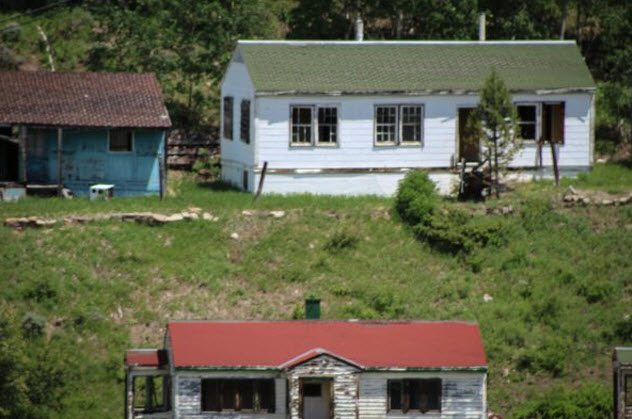
Gilman, Colorado, began as a mining town in 1886 during the Colorado Silver Boom. But it is considered a modern ghost town thanks to the permanent evacuation in 1984 ordered by the Environmental Protection Agency (EPA).
The town was abandoned due to contamination of the groundwater from poor mining practices that allowed for an abundance of zinc, lead, cadmium, arsenic, and sulfides beginning in the early 20th century.
While Gilman was never a large town, it did host a population of around 300 people, which fluctuated every so often. The town has been declared a Superfund site, which is a federal program identifying areas so contaminated with hazardous substances that they are no longer habitable and require cleanup.
As it stands, the town looks much like it did when it was abandoned. Vandalism has destroyed every pane of glass, but the houses, bowling alley, and even personal automobiles remain abandoned in the ghost town.[3]
7 Bikini Atoll
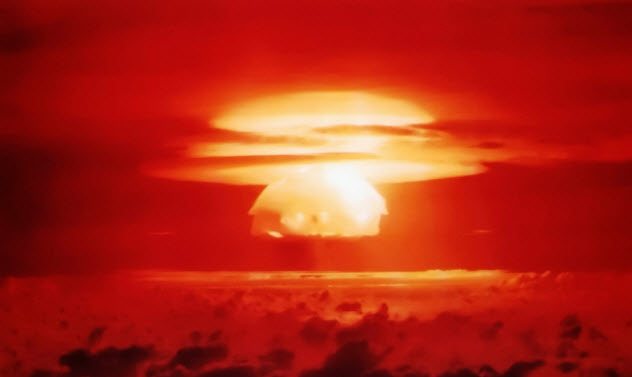
You may have heard of the Bikini Atoll atomic tests conducted in the 1950s, but you will never have a chance to visit there. The original inhabitants of the island have been exiled from their homeland for 71 years thanks to the US tests.
On March 1, 1954, the US tested the Bravo hydrogen bomb, a 15-megaton nuclear weapon that vaporized three islands and was more than 1,000 times the magnitude of the bombs dropped on Hiroshima and Nagasaki. The islands remain uninhabitable and deadly due to consistent fallout.[4]
Beginning in 1946, the United States tested a total of 67 nuclear devices on and around the Bikini Atoll and the Marshall Islands. Twenty-three of those detonations took place directly on, over, or under Bikini Atoll.
Believe it or not, there are a few people who live on the island as caretakers. They regularly test the soil and work on cleanup methods to reduce the radiative impact.
Attempts have been made to return the original inhabitants and their descendants to the island. But all efforts have been stalled due to the abundance of strontium-90, which is not something humans should be around if they value their skeletons. (It causes bone cancer, leukemia, and a host of nasty diseases.)
6 Picher, Oklahoma
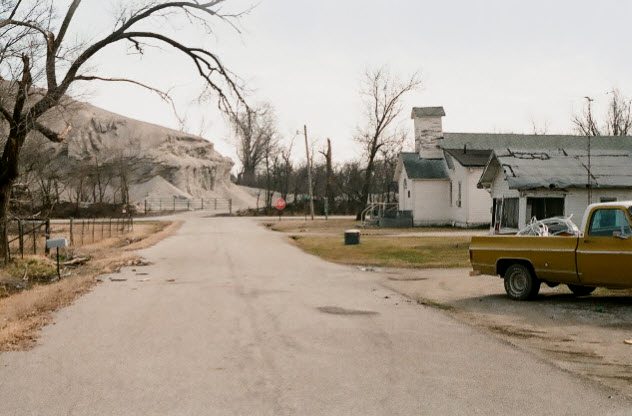
Picher, Oklahoma, is a great place to visit if you want lead poisoning. The modern ghost town was abandoned by order of the EPA due to the abundance of unrestricted subsurface excavation throughout the town.
An Army Corps of Engineers study found that 86 percent of the buildings (including the school) were undermined and could collapse at any time. Weak buildings weren’t the only problem, though. A study in 1996 by the EPA found that 34 percent of the children in the town suffered from lead poisoning.
At one time, Picher was the economic hub of the entire region due to the abundance of lead and zinc mining. The population was in excess of 20,000 at one time with more than 14,000 miners working.
But the years of unregulated digging and poor waste management left the town uninhabitable, and it was declared a Superfund site. There are large piles of toxic metal strewn about the town, which doesn’t keep the groundwater very clean.
After the government bought the land and evacuated the population, the place became a wasteland of dead earth. It didn’t help that a tornado destroyed much of the town in 2008. The last resident died just a few years later.[5]
5 Wittenoom, Australia
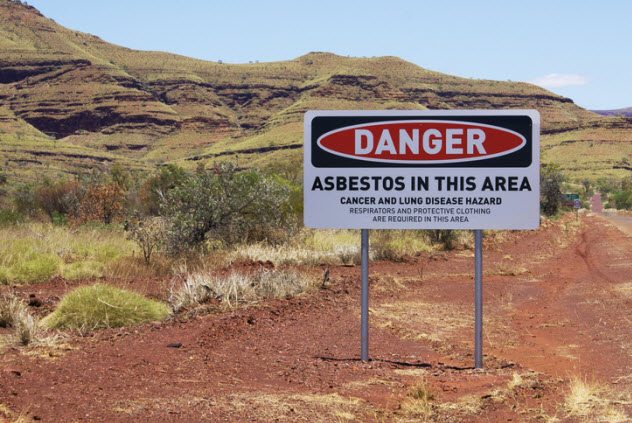
It took a few years, but we eventually learned that asbestos is dangerous to humans. It causes mesothelioma—which is not only difficult to say, it’s deadly. So asbestos has been cleaned up and removed wherever it has been found.
In the 1960s, Wittenoom, Australia, was the largest producer of blue asbestos on the continent. But by 2013, the town was closed due to the toxic levels of blue asbestos throughout the area.[6]
As the dangers of asbestos were becoming clear in the late 1970s, the government began phasing out the township. The town was becoming contaminated and dangerous to anyone who needed to breathe, so the phasing out seemed like a good idea.
By 2015, the Australian government had removed the town from its services, essentially delegitimizing it so that it no longer existed. Some people held out until that time. But when the government no longer recognizes the place you live as being a real location, it’s time to move somewhere else.
Three people may not have gotten that message since they are still defying all logic and refusing to leave the town.
4 Centralia, Pennsylvania
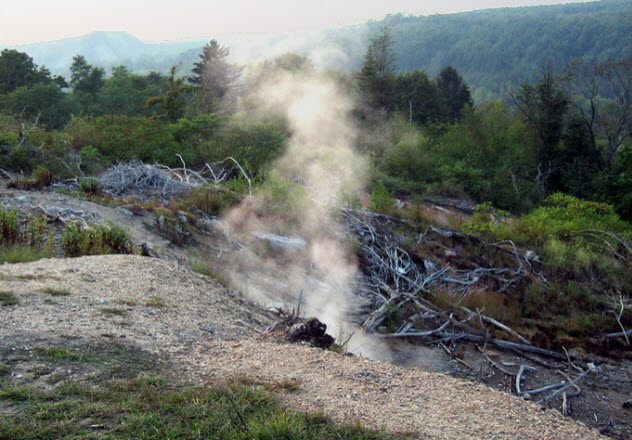
The next time you are visiting Pennsylvania, steer clear of a small mining town named Centralia. The place has been on fire for 55 years and could burn for another 250 if estimates are correct.
Yes, you read that correctly, and you would be wise to read the signs posted all over the place that warn weary travelers of their probable deaths by asphyxiation or by being swallowed by the ground . . . which is often ablaze.
Centralia once hosted a modest population of 1,000 people, but it is now a modern-day ghost town thanks to an underground inferno that is consuming tons of coal. The townspeople were able to suppress the fire aboveground, but it raged underground and continues to smolder.
Fissures open on the surface all the time and spew sulfurous gases that are deadly to anyone and anything. There are 12 people still living there as they refuse to leave.[7] But they represent just 1 percent of the original population. Moving to Centralia is a death sentence for most people, and it should never be on a list of places to check out while driving through Pennsylvania.
3 Chernobyl Zone Of Alienation, Ukraine
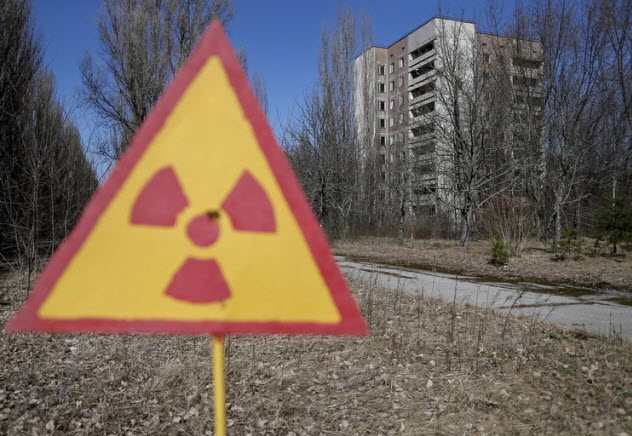
One of the worst nuclear disasters of all time occurred at the Chernobyl Nuclear Power Plant in 1986. Thanks to a late-night safety test, the shutoff of emergency safety systems, and a preventable steam explosion and graphite fire, nuclear fallout precipitated over much of the western USSR and parts of Europe.
Thirty-one people were killed directly by the radiation released from the accident, 28 of whom were firefighters and employees working to put out the fires and stop the radiation leak.
Since the accident, an exclusion zone has been established extending 30 kilometers (19 mi) in all directions. It has been estimated that the land will not be fully safe for human habitation for another 20,000 years.
But despite the danger, some Ukrainians refuse to leave and have remained within the exclusion zone.[8] The workers who continue to build a sarcophagus around the remaining plant are only permitted to work for five hours a day for one month before being forced to take 15 days off.
The site can be visited if the proper precautions are taken. But visiting is dangerous and should only be done to learn more about the disaster (if that’s your thing).
2 Aral Sea
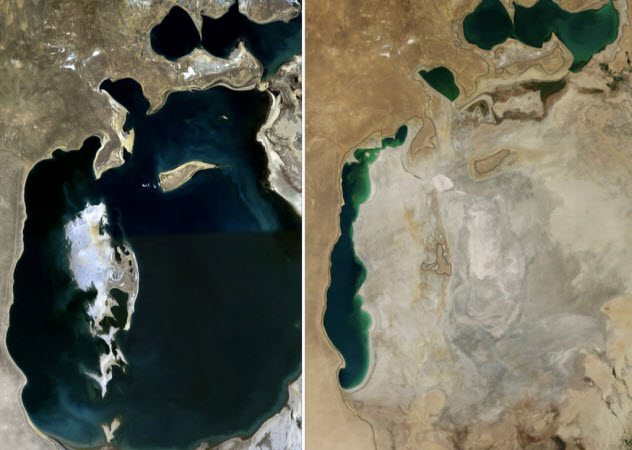
The Aral Sea was once a large lake between the borders of Kazakhstan and Uzbekistan. But thanks to global climate change, the lake is ostensibly gone. As we mentioned, Vozrozhdeniya Island used to be an island in the Aral Sea but isn’t any longer due to the huge loss of water that has left the entire area an arid wasteland.
The lake is only 10 percent of its original size, and much of the loss has occurred in the past 30 years. The sea began shrinking due to a Soviet plan in the 1960s to reroute several of the rivers feeding it. But most of the water has evaporated thanks to the increase in global temperatures.
The shrinking of the Aral Sea has been called “one of the planet’s worst environmental disasters.” Although the area was once a prosperous fishing location that helped boost the economies of both border nations, it is now a dead zone.[9]
The ruins of fishing vessels litter the desert landscape in an area that is now heavily polluted and a public health concern. Numerous towns vanished from the face of the Earth, and the eastern basin of the Aral Sea is now known as the Aralkum Desert.
1 Fukushima Exclusion Zone, Japan
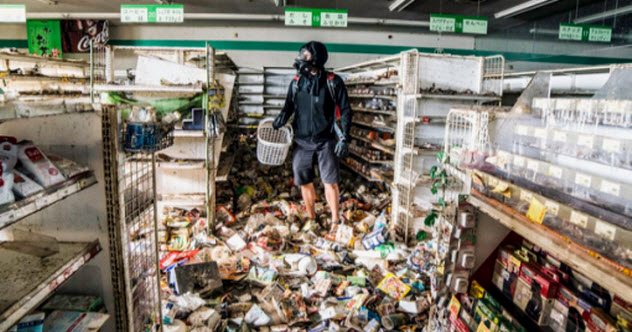
Thanks to the Tohoku earthquake on March 11, 2011, a tsunami pummeled the Fukushima Daiichi Nuclear Power Plant, resulting in three nuclear meltdowns.
Although it may seem like an “act of God” type of disaster, an independent investigative team determined that the causes of the accident were foreseeable and the plant operator had failed to meet basic safety requirements, resulting in the fallout. As of this writing, the Fukushima nuclear disaster is the most significant nuclear incident since we split the atom.
Contaminated groundwater continued to seep through a frozen soil barrier that has been erected to protect the area from the fallout, and the environmental impact has been significant.
Since the accident, there haven’t been any directly related deaths. But estimates suggest that thousands of people may succumb to cancer as a result of the fallout over the next 3–4 decades. Due to all the contamination, the area within a 20-kilometer (12 mi) exclusion zone is currently off-limits unless you are interested in acquiring severe radiation sickness and, you know, dying.[10]
Jonathan is a graphic artist, illustrator, and writer. He is a retired soldier and enjoys researching and writing about history, science, theology, and many other subjects.
Read about more nightmarish destinations on 10 Of The World’s Deadliest Tourist Destinations and 10 Real Places Straight Out Of A Nightmare.







